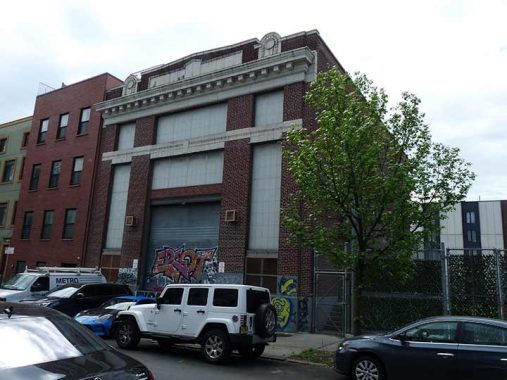
In an earlier era of subway construction, the bulk of what is now called the L train was constructed between 1916 and 1924, an eight-year period, by an privately-owned entity known as Brooklyn Rapid Transit, which ran most of Brooklyn’s transit operations in the eastern part of the borough. After the Malbone Street Wreck in 1918, the BRT reorganized as Brooklyn-Manhattan Transit (the BMT), which itself became part of the New York City transit system when the city purchased it and the Independent and Interborough subway lines in 1940.
The L train’s engineer in charge was Clifford Milburn Holland (1883-1924) who built many railroad and vehicular tunnels in the New York City area but did not live to see the Hudson River Tunnel named for him to fruition when it opened in 1927. The original line — which was originally called the #16, as BMT trains did not receive letter designations until the 1960s — ran between Union Square and the Montrose Avenue station, a convenient terminal in the line’s early days because new subway cars would be delivered directly to the new line from the Long Island Rail Road Bushwick Branch, which terminated at Montrose Avenue and Bushwick Place, a block away from the tunnel on Bushwick Avenue. The LIRR uses the Bushwick trackage for freight to this day.
The original section of the L train was forced to take a convoluted route because of the street layout in Williamsburg, as engineers did not want to have to tunnel beneath building foundations. Thus, the tunnel runs under North 7th Street, Metropolitan Avenue, Bushwick Avenue, McKibbin Street, and Harrison Place before straightening its route beneath Wyckoff Avenue for the bulk of its Bushwick run.
In a recent jaunt in East Williamsburg and Bushwick I chanced upon this relic from an earlier age on Boerum east of Bushwick Avenue. Its ornamentation at the roofline indicated it’s of importance. A look at the indispensable 1940snyc website confirmed my hunch:
The large building … is our BMT Bushwick Substation. One of the last two Rotary Converter substations built (Avenue T/West 7th Street was its sister). It was constructed in 1925 to power the Canarsie subway running under Bushwick Ave. It was equipped with a single GE 4000 kW rotary converter, remotely controlled by the substation operators at the nearby Ridgewood Substation. Unlike Avenue T, built with Westinghouse equipment, Bushwick was a full GE station containing GE low and high tension switchgear and a GE Synchronous selector remote control system. Bushwick received 11000 volt 25 cycle power from the BRT/BMT Williamsburgh power house. The spinning rotary converted the AC to DC to power the rails in the subway. In the rear of this substation was a massive Edison transformer able to step down 33000 volts to 11000 volts for emergency substation use. It was rarely used as Edison posed a stiff surcharge for the use of its power. The building stands today though during modernization most windows were closed and a new rolling door was installed. This station was modernized in the 1990’s using dual 3000 kW solid state rectifiers and brand new switchgear to match. It is now under computer control by the BMT System Operator in the new mid-town Manhattan Power Control Center. –Bob Lobenstein, Retired General Superintendent NYC Transit Power Operations
Check out the ForgottenBook, take a look at the gift shop. As always, “comment…as you see fit.” I earn a small payment when you click on any ad on the site.
5/5/25
